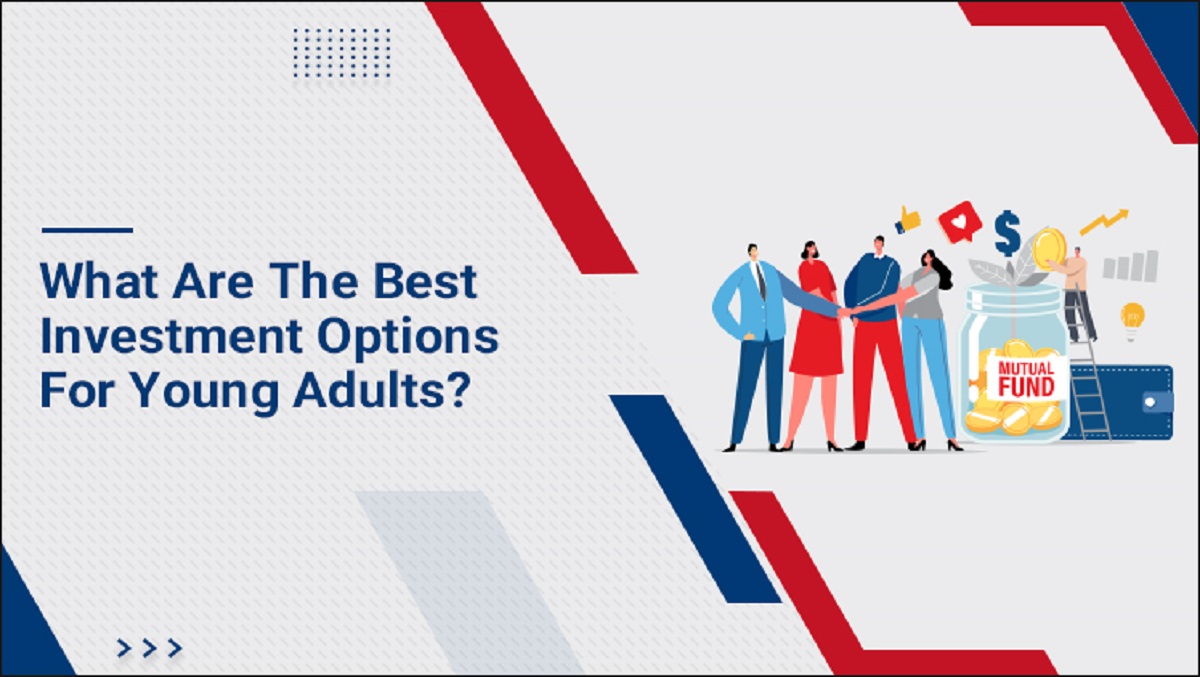Introduction
Fintech, or financial technology, has revolutionized the way lending works in developing countries. With the rapid advancement of technology, fintech has emerged as a powerful tool for financial inclusion, bringing access to financial services to underserved populations. In many developing countries, traditional lending institutions have struggled to reach those in need due to limited infrastructure or lack of credit history. However, fintech has bridged this gap by leveraging technology and innovative business models to provide efficient and accessible lending solutions.
Fintech encompasses a wide range of services, including mobile banking, digital payments, peer-to-peer lending, and online lending platforms. By utilizing technology, fintech companies have been able to streamline processes, reduce costs, and provide financial services to a broader customer base. This article explores the role of fintech in changing how lending works in developing countries, highlighting the various ways in which it is increasing access to financial services, impacting traditional lending institutions, and stimulating economic growth.
Furthermore, we will delve into the rise of peer-to-peer lending platforms and the use of alternative data in credit scoring. These innovations have reshaped the lending landscape, making it easier for individuals and small businesses to obtain loans. Additionally, we will explore how fintech is mitigating risk in developing countries, a crucial consideration in markets where traditional credit scoring models may not be suitable.
While fintech presents significant opportunities for financial inclusion and economic growth, it also poses challenges and considerations. We will discuss the potential risks and regulatory considerations associated with fintech lending and how these issues can be effectively addressed.
Overall, the rise of fintech has transformed the lending landscape in developing countries, bringing financial services to previously underserved populations. This article will shed light on the transformative power of fintech and its potential to reshape the future of lending in developing economies.
The Role of Fintech in Developing Countries
Fintech has played a crucial role in driving financial inclusion and empowering individuals and small businesses in developing countries. By leveraging technology, fintech companies have been able to address the challenges faced by traditional lending institutions and provide innovative solutions to expand access to financial services.
One of the key contributions of fintech in developing countries is the ability to reach underserved populations. Many individuals in these regions do not have access to traditional banking services due to factors such as geographical barriers, lack of infrastructure, or limited financial literacy. Fintech has overcome these barriers by offering mobile banking services and digital payment platforms that can be accessed through smartphones even in remote areas. This has allowed individuals to manage their finances, make transactions, and access credit, enabling them to participate more fully in the economy.
In addition to reaching the unbanked, fintech has also made it easier for small businesses and entrepreneurs to access financing. In many developing countries, small businesses often struggle to obtain loans from traditional banks due to onerous paperwork requirements or lack of collateral. Fintech platforms have emerged as an alternative source of funding for these businesses, offering streamlined loan application processes and using alternative credit scoring methods to assess borrowers’ creditworthiness. This has opened up opportunities for small businesses to grow, create jobs, and contribute to economic development.
Fintech has also played a significant role in remittance services, which are crucial for many developing countries. Migrant workers often send money back to their home countries to support their families and contribute to the local economy. However, traditional remittance channels can be expensive and time-consuming. Fintech companies have introduced digital remittance platforms, allowing for faster and more cost-effective transfer of funds. This has helped reduce the cost of remittances, increase the speed of transactions, and improve financial stability for families in developing countries.
Overall, fintech has emerged as a powerful force for financial inclusion in developing countries. By leveraging technology and innovative business models, fintech companies are addressing the barriers that have limited access to financial services for millions of individuals and businesses. As a result, fintech is empowering people, stimulating economic growth, and driving positive social impact in these regions.
How Fintech Is Increasing Access to Financial Services
Fintech has revolutionized access to financial services in developing countries, bridging the gap between the underserved populations and traditional banking systems. By leveraging technology, fintech companies are providing innovative solutions that make financial services more accessible, convenient, and affordable.
Mobile banking is one of the key ways in which fintech has increased access to financial services. In many developing countries, a significant portion of the population does not have access to brick-and-mortar banks or ATMs. However, the widespread adoption of mobile phones has created an opportunity for fintech companies to offer mobile banking services. Through mobile apps, people can open accounts, make deposits, transfer funds, and access a range of financial services right from their smartphones. This has opened up banking services to a larger population, including those in remote areas.
Digital payments have also been a game-changer in increasing access to financial services. Cash transactions are often costly, inconvenient, and prone to theft. Fintech companies have introduced digital payment platforms that allow individuals and businesses to make secure and instant transactions using their smartphones. This has not only reduced the reliance on cash but also provided a convenient and secure way of making payments, even in areas where traditional financial infrastructure is limited. With the advent of digital wallets and payment apps, individuals can now make purchases, pay bills, and transfer money with just a few taps on their smartphones.
Online lending platforms have emerged as another crucial aspect of fintech’s role in increasing access to financial services. These platforms connect borrowers directly with lenders, cutting out the middlemen and reducing costs associated with traditional lending. They often use alternative credit scoring methods, such as analyzing digital footprints, transaction history, and social media data, to evaluate borrowers’ creditworthiness. As a result, individuals and small businesses with limited or no credit history can access loans that were previously unavailable to them. Online lending platforms have the potential to democratize access to credit, enabling previously underserved segments of the population to meet their financial needs and pursue entrepreneurial endeavors.
Overall, fintech is transforming the landscape of financial services by innovating and leveraging technology. Through mobile banking, digital payments, and online lending platforms, fintech has significantly expanded access to financial services in developing countries, enabling individuals and businesses to participate more fully in the economy and improve their financial well-being.
The Impact of Fintech on Traditional Lending Institutions
Fintech has had a profound impact on traditional lending institutions in developing countries, disrupting the traditional banking model and forcing these institutions to adapt to the changing landscape. The rise of fintech has challenged the monopoly that traditional banks once held, introducing innovative alternatives that offer greater convenience, accessibility, and flexibility.
One of the key impacts of fintech on traditional lending institutions is increased competition. Fintech companies, with their agile and technology-driven approach, have been able to offer faster loan approval processes, lower interest rates, and more personalized lending options. This has put pressure on traditional banks to update their processes, streamline their services, and improve the customer experience to remain competitive.
Furthermore, fintech has shifted the focus from physical branches to digital platforms. Traditional banks have long relied on brick-and-mortar branches to serve their customers, but fintech companies have capitalized on the digital revolution by offering online and mobile banking services. This shift has allowed fintech companies to reduce overhead costs, which in turn has led to lower fees and better interest rates for borrowers. Traditional banks are now increasingly investing in technology to modernize their operations and meet the evolving needs of their customers.
Another significant impact of fintech on traditional lending institutions is the changing customer expectations and preferences. Fintech companies have set new standards for speed, convenience, and transparency in financial services. Customers now expect instant loan approvals, easy access to funds, and seamless digital experiences. Traditional banks have had to adapt their processes and invest in digital infrastructure to meet these demands.
Fintech has also paved the way for collaboration between traditional lending institutions and fintech companies. Many banks have recognized the potential of fintech and have formed partnerships or acquired fintech startups to enhance their digital capabilities and expand their service offerings. This collaboration has resulted in the development of hybrid models that combine the strengths of traditional banks and fintech innovation.
In summary, fintech has disrupted traditional lending institutions in developing countries by increasing competition, shifting the focus to digital platforms, raising customer expectations, and fostering collaboration between banks and fintech companies. Traditional banks have had to adapt to this new landscape by investing in technology, improving efficiency, and embracing innovation. As the fintech revolution continues to unfold, traditional lending institutions must continue to adapt and innovate to remain relevant in the ever-changing financial services industry.
The Rise of Peer-to-Peer Lending Platforms
One of the significant developments in the fintech industry is the rise of peer-to-peer (P2P) lending platforms. These platforms connect borrowers directly with lenders, bypassing traditional financial intermediaries. P2P lending has gained momentum in developing countries, offering an alternative lending option that benefits both borrowers and lenders.
One of the key advantages of P2P lending platforms is increased access to credit. Traditional lending institutions often have strict eligibility criteria and lengthy approval processes, making it difficult for individuals and small businesses with limited credit history to obtain loans. P2P lending platforms have introduced a more inclusive approach, allowing borrowers with diverse credit profiles to access funding. By leveraging technology, these platforms assess borrowers based on alternative credit scoring methods, such as analyzing their income, employment history, and social media presence, enabling individuals to secure loans that might have been otherwise inaccessible to them.
P2P lending platforms also offer borrowers more flexible and competitive interest rates. In traditional banking, interest rates are often determined based on the lender’s risk assessment and the bank’s lending policies. P2P lending platforms, on the other hand, allow borrowers to negotiate and agree on interest rates directly with the lenders. This peer-driven approach often results in more competitive rates, benefiting borrowers with better terms than what they could obtain from traditional financial institutions.
Likewise, P2P lending platforms provide an attractive opportunity for lenders. Through these platforms, individuals can become lenders and invest directly in loans, potentially earning higher returns than they would from traditional investment options. By diversifying their lending portfolios across multiple borrowers, lenders can mitigate risks and maximize their earning potential. P2P lending platforms have made investing in loans more accessible and transparent, allowing lenders to have greater control over their investments and make informed decisions.
However, it is important to note that P2P lending platforms also come with risks. As these platforms operate online, they are exposed to potential fraud and default risks. Regulatory frameworks are still evolving in many countries to address such risks and protect the interests of both borrowers and lenders. It is crucial for borrowers and lenders to thoroughly investigate and understand the terms, fees, and reputation of P2P lending platforms before participating.
Overall, the rise of P2P lending platforms in developing countries has democratized access to credit, providing an alternative lending option for individuals and small businesses. By connecting borrowers directly with lenders, P2P lending platforms offer access to affordable loans and attractive investment opportunities. As the popularity of P2P lending continues to grow, it is likely to reshape the lending landscape and contribute to financial inclusion in developing economies.
Fintech’s Role in Mitigating Risk in Developing Countries
In developing countries, managing and mitigating risks is a critical aspect of lending. Traditional lending institutions often face challenges in assessing creditworthiness and mitigating risks in markets with limited credit histories and information. Fintech has emerged as a game-changer in this regard, leveraging technology and alternative data to address these challenges effectively.
One of the ways fintech mitigates risk is through the use of alternative data in credit scoring. In developing countries, many individuals and small businesses lack a formal credit history, making it difficult for traditional lenders to assess their creditworthiness. Fintech companies have stepped in by analyzing alternative data sources, such as transaction history, utility bills, and even social media data, to evaluate borrowers’ creditworthiness. This alternative data provides valuable insights into borrowers’ financial behaviors, enabling lenders to make more accurate lending decisions and offer loans to individuals who may have been overlooked by traditional lenders.
Fintech also leverages technology to mitigate operational risks associated with lending in developing countries. By digitizing lending processes, fintech companies reduce the paperwork, delays, and errors commonly associated with traditional lending. This not only streamlines the lending process but also minimizes the risk of human errors and fraud. Additionally, fintech companies often use automation and algorithms to assess loan applications, reducing the risk of biased decision-making and increasing the efficiency of the lending process.
Gathering and analyzing real-time data is another way fintech helps mitigate risk. Traditional lenders often base their decisions on historical financial statements, which may not provide an accurate representation of a borrower’s current financial situation. Fintech companies utilize real-time data, such as bank transaction records and payment histories, to assess borrowers’ financial health in a more up-to-date manner. This enables lenders to make more informed decisions based on accurate and timely information, reducing the risk of lending to borrowers who may be experiencing financial difficulties.
Furthermore, fintech’s use of digital platforms and mobile technology allows for more accurate tracking and monitoring of loans. Borrowers can easily access their loan information, make payments, and receive reminders, minimizing the risk of default. This digital infrastructure also allows lenders to proactively engage with borrowers, offer financial education, and provide support, further reducing the risk of default and enhancing overall loan performance.
While fintech plays a significant role in mitigating risk, there are still challenges to overcome. As fintech companies continue to innovate and leverage technology, regulatory frameworks must keep pace to ensure proper oversight and consumer protection. Additionally, collaboration between fintech companies, traditional lenders, and regulators is crucial in developing effective risk management strategies and ensuring the sustainability and stability of the lending ecosystem.
In summary, fintech’s innovative use of alternative data, technology, and real-time information has significantly contributed to mitigating risks associated with lending in developing countries. By leveraging these tools, fintech companies are expanding access to credit while minimizing operational, credit, and default risks. As the fintech industry continues to evolve, its role in mitigating risk is likely to become even more robust, driving financial inclusion and economic growth in developing economies.
The Use of Alternative Data in Credit Scoring
Traditional credit scoring models rely heavily on factors such as credit history, income, and employment status. However, in developing countries where many individuals and small businesses lack formal credit histories, accessing financial services can be challenging. Fintech has addressed this issue by leveraging alternative data sources to assess creditworthiness and provide financial services to those who were previously excluded.
Alternative data refers to non-traditional sources that provide insights into borrowers’ financial behaviors and creditworthiness. Fintech companies are harnessing the power of alternative data to build innovative credit scoring models that take into account a broader range of factors.
One of the commonly used types of alternative data is transaction data. By analyzing an individual’s banking transactions, fintech companies can gain insights into their spending patterns, income stability, and financial habits. This data provides a more holistic view of a borrower’s financial behavior, allowing lenders to assess creditworthiness accurately.
In addition to transaction data, alternative data sources can also include utility bill payments, rent payments, and even mobile phone usage patterns. These non-traditional sources provide valuable information about an individual’s reliability and financial responsibilities. For example, regular and timely utility bill payments may indicate a borrower’s ability to meet financial obligations.
Social media data is another emerging source of alternative data. Fintech companies are exploring ways to analyze social media profiles and activities to assess creditworthiness. For example, positive reviews or recommendations on a borrower’s professional profile may indicate reliability and responsibility.
The use of alternative data in credit scoring has several advantages. It expands access to credit by allowing individuals and businesses without traditional credit histories to access loans. This is particularly beneficial for those in developing countries who have been excluded from the formal banking system.
Furthermore, alternative data provides a more accurate picture of a borrower’s financial situation, especially in real-time. Traditional credit scoring models often rely on historical data, which may not reflect a borrower’s current financial circumstances. By leveraging alternative data, lenders can make lending decisions based on the most up-to-date and relevant information.
However, there are challenges and considerations in the use of alternative data. Privacy concerns and data security are significant considerations when collecting and analyzing alternative data. Regulators and fintech companies must work together to establish rigorous data protection frameworks to ensure the ethical and responsible use of alternative data.
Moreover, the use of alternative data must be coupled with responsible lending practices. Fintech companies need to ensure that they do not discriminate against certain groups or rely on biased data sources that may perpetuate existing inequalities. Fairness and transparency in the credit scoring process are essential to enable inclusive lending.
Overall, the use of alternative data in credit scoring has the potential to revolutionize lending by expanding access to credit and providing a more accurate assessment of creditworthiness. As fintech continues to innovate and refine credit scoring models, the use of alternative data is likely to become even more widespread, empowering individuals and businesses in developing countries to access the financial services they need to thrive.
Fintech’s Potential to Stimulate Economic Growth
Fintech has the potential to stimulate economic growth in developing countries by promoting financial inclusion, unlocking new business opportunities, and increasing the efficiency of financial transactions.
First and foremost, fintech plays a crucial role in driving financial inclusion. By leveraging technology, fintech companies are able to reach unbanked and underbanked populations, providing access to financial services that were previously inaccessible. This inclusion enables individuals and businesses to participate more fully in the formal economy, opening up opportunities for economic growth and development.
In addition, fintech creates new business opportunities by facilitating access to credit for small and medium-sized enterprises (SMEs). Traditional lending institutions often have strict requirements and lengthy approval processes that deter SMEs from obtaining loans. Fintech platforms offer alternative lending options with quicker approval processes, lower fees, and more flexible lending criteria. This allows SMEs to access the capital they need to expand their operations, invest in new technologies, and create jobs, thereby driving economic growth.
Fintech also enhances the efficiency of financial transactions, reducing costs and time delays associated with traditional banking processes. For example, digital payment platforms allow for instant and low-cost transactions, eliminating the need for physical cash and reducing the risk of theft. This efficiency benefits individuals, businesses, and the overall economy by facilitating seamless transactions, improving liquidity, and enhancing productivity.
Moreover, fintech promotes innovation in the financial sector. By leveraging technology, fintech companies are able to introduce new and innovative products and services that cater to the unique needs of developing economies. This innovation fosters competition, drives efficiency, and encourages traditional banking institutions to adapt and improve their offerings, ultimately benefiting consumers and stimulating economic growth.
Fintech also has the potential to improve the efficiency and transparency of government services and processes. By digitizing payment systems and enabling digital identification, fintech can help reduce corruption, streamline government transactions, and improve public service delivery. This, in turn, enhances governance, increases transparency, and drives economic growth by attracting investment and improving the business environment.
It is important to acknowledge that challenges exist in realizing the full potential of fintech to stimulate economic growth in developing countries. These challenges include regulatory frameworks, data privacy concerns, and ensuring equal access to fintech services. Addressing these challenges is crucial to ensure that the benefits of fintech are realized in a sustainable and inclusive manner.
In summary, fintech’s potential to stimulate economic growth in developing countries is significant. By promoting financial inclusion, unlocking new business opportunities, increasing transactional efficiency, and fostering innovation, fintech can drive economic development and improve the overall well-being of individuals and communities. Governments, regulators, and fintech companies must work together to harness this potential and create an enabling environment that fosters innovation, protects consumers, and maximizes the positive impact of fintech on economic growth.
Challenges and Considerations for Fintech Lending in Developing Countries
While fintech lending has the potential to revolutionize access to credit in developing countries, there are several challenges and considerations that need to be addressed to ensure its effectiveness and sustainability.
One of the primary challenges is the regulatory environment. Many developing countries have not yet established comprehensive regulations for fintech lending, creating uncertainties and potential risks for both borrowers and lenders. Regulators need to develop clear guidelines and frameworks that support fintech innovation while safeguarding consumer interests, ensuring fair lending practices, and promoting financial stability.
Data privacy and security is another crucial consideration in fintech lending. As fintech companies collect and analyze vast amounts of personal and financial data, it is essential to protect this information from unauthorized access or misuse. Robust data protection frameworks and cybersecurity measures are necessary to build trust and safeguard the privacy of borrowers.
Furthermore, ensuring equal access to fintech lending services is vital. Fintech should be inclusive and accessible to all segments of the population, including women, rural communities, and marginalized groups. Efforts should be made to address any existing biases or discriminatory practices in credit scoring models and ensure that underrepresented groups have fair and equal access to financial services.
Financial literacy is also a significant consideration in fintech lending. Many individuals in developing countries may not have the necessary knowledge and understanding of financial products and services. Fintech companies should invest in financial education initiatives to empower borrowers to make informed decisions, understand loan terms and conditions, and manage their finances responsibly.
Additionally, credit risk management is crucial in fintech lending. Alternative credit scoring methods may not always accurately predict a borrower’s creditworthiness, leading to potential defaults and loan losses. Fintech companies need to implement robust risk assessment mechanisms, utilize advanced analytics, and continuously refine their credit models to minimize default risks and ensure the long-term sustainability of their lending operations.
Finally, collaboration and partnerships between fintech companies, traditional lenders, and regulators are key in addressing these challenges and considerations. By working together, stakeholders can leverage their respective strengths and expertise to create a supportive ecosystem that fosters responsible innovation, protects consumers, and enables fintech lending to thrive in developing countries.
In summary, while fintech lending holds great promise for improving access to credit in developing countries, several challenges and considerations need to be addressed. Regulatory frameworks, data privacy, equal access, financial literacy, and credit risk management are significant factors that require attention. By addressing these challenges and considering these considerations, fintech lending can become a powerful tool for promoting financial inclusion and driving economic growth in developing economies.
Conclusion
Fintech has transformed lending in developing countries, bringing access to financial services to underserved populations and stimulating economic growth. By leveraging technology, fintech companies have increased access to financial services through mobile banking, digital payments, and online lending platforms.
Fintech has disrupted traditional lending institutions, increasing competition, shifting the focus to digital platforms, and raising customer expectations. Traditional banks have been forced to adapt and invest in technology to remain competitive in the evolving financial services industry.
One of the significant developments in fintech lending is the rise of peer-to-peer lending platforms. These platforms connect borrowers directly with lenders, providing more inclusive access to credit and empowering small businesses and individuals with limited credit history.
Fintech has also played a crucial role in mitigating risks in developing countries. By leveraging alternative data sources and innovative credit scoring models, fintech companies have overcome the limitations of traditional credit assessment methods, expanding access to credit and making lending more efficient and reliable.
Furthermore, fintech has the potential to stimulate economic growth by promoting financial inclusion, unlocking new business opportunities for small and medium-sized enterprises, and increasing the efficiency of financial transactions. The innovation and technology-driven approach of fintech have opened up avenues for economic development and improved the overall well-being of individuals and communities.
However, ensuring the success and sustainability of fintech lending in developing countries requires addressing challenges and considering various factors. Regulatory frameworks, data privacy, equal access, financial literacy, and credit risk management are critical considerations that need to be carefully addressed
Overall, fintech has revolutionized lending in developing countries, providing financial inclusion, innovation, and opportunities for economic growth. As the fintech industry continues to evolve, collaboration between fintech companies, traditional lenders, and regulators is essential to create an enabling environment that balances innovation, consumer protection, and financial stability.

























